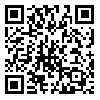BibTeX | RIS | EndNote | Medlars | ProCite | Reference Manager | RefWorks
Send citation to:
URL: http://ijpcp.iums.ac.ir/article-1-2491-en.html

 , Ali Mohammad Pourrahimi2
, Ali Mohammad Pourrahimi2 
 , Nooshin Parvaresh3
, Nooshin Parvaresh3 
 , Mahin Eslami Shahrbabaki3
, Mahin Eslami Shahrbabaki3 
 , Mostafa Yazdani4
, Mostafa Yazdani4 

2- Kerman University of Medical Sciences.
3- Kerman University of Medical Sciences
4- Department of Psychiatry, Kerman University of Medical Sciences ,
Objectives: The present study aimed to investigate pseudoneglect from visual and representational dimensions and its relation to attention deficit in patients with schizophrenia. Method: A group of 30 patients with schizophrenia and a group of 30 healthy individuals were recruited using convenient sampling method . Four tests were used to examine pseudoneglect: Line Bisection Task (LBT), Mental Bisection Task (MBT), Star Cancellation Task (SCT), and Mental Dice Task (MDT). To evaluate attention, the Trail Making Test (TMT) (A and B) and WAIS III Digit Symbol Coding (DSC) were used. Results: Normal individuals, marked bisection line leftward significantly (p=0.03) on the LBT , but this was not observed in patients. Also, on MBT, the normal individuals significantly reported lower score from real middle score, though it was not observed in patients. Mean biases in LBT had a significant positive correlation with TMT A (r=0.42, p=0.001) and mean biases in MBT had positive correlation with TMT B (r=0.29, p=0.023), and negative correlation with Symbol Coding test A (r=0.30, p=0.018). Conclusion: Research findings indicate a possibly lack of pseudoneglect and the presence of an anomalous brain asymmetry in patients with schizophrenia.
Received: 2016/05/7 | Accepted: 2016/05/7 | Published: 2016/05/7
| Rights and permissions | |
 |
This work is licensed under a Creative Commons Attribution-NonCommercial 4.0 International License. |

